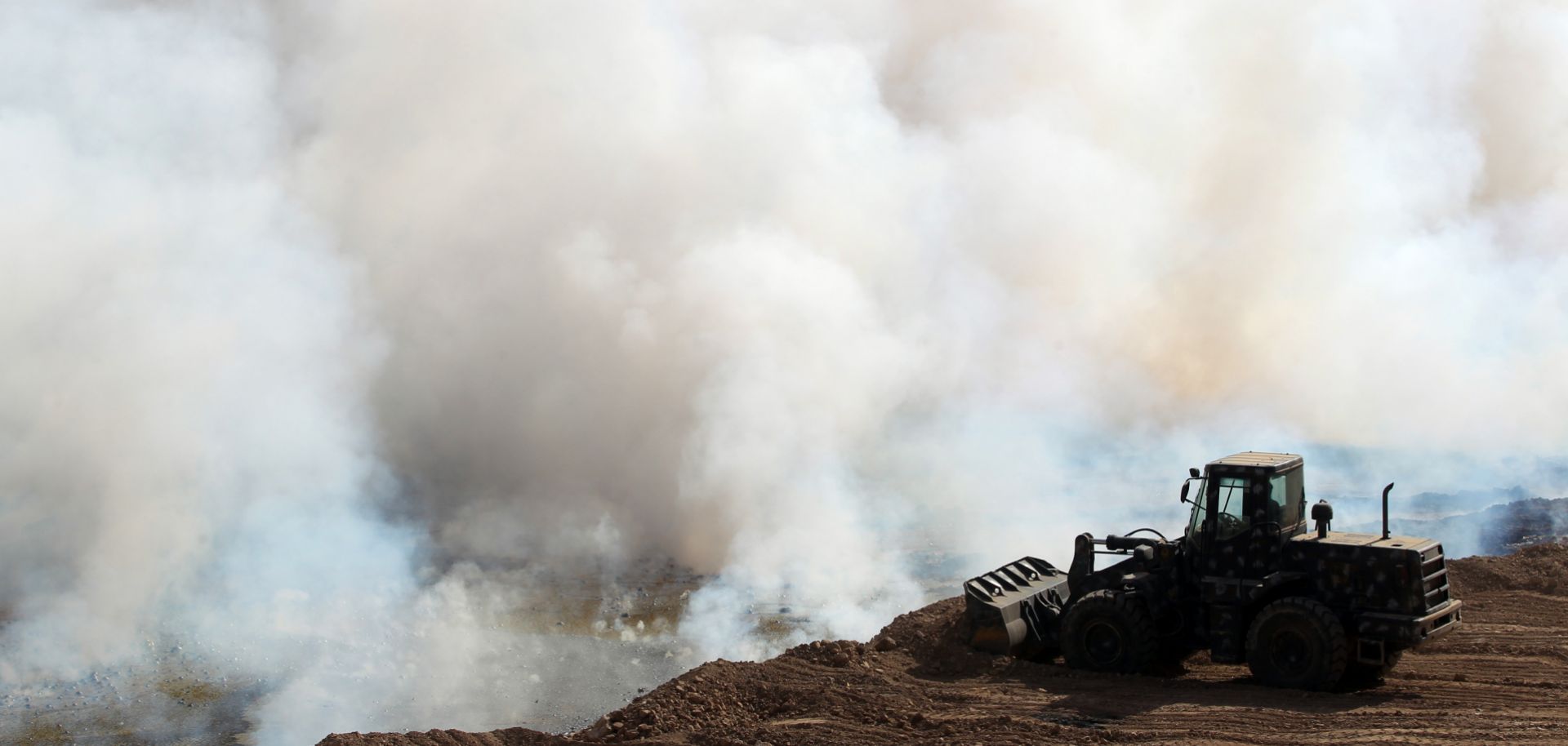COLUMNS
Fire As a Weapon of Terrorism

May 28, 2019 | 05:30 GMT

Iraqi forces attempt to extinguish the flames after Islamic State (IS) group jihadists torched Mishraq sulphur factory, near the Qayyarah base, about 30 kilometres south of Mosul, during an operation to retake the main hub city from IS on October 22, 2016. Toxic fumes released when jihadists torched a sulphur plant near Mosul have killed two Iraqi civilians, made many ill and forced US troops at a nearby base to wear masks.
(AHMAD AL-RUBAYE/AFP/Getty Images)
Highlights
- Terrorists have employed arson in several recent incidents, and it is likely to be used even more in the future.
- Arson attacks are far easier to conduct than bombing attacks, and the materials required to start a fire are cheap and readily available.
- Given the increasing global trend of right-wing violence, a surge in environmental activism and the persistent jihadist threat, an increase in the use of arson as a terrorist tool is anticipated.
Subscribe Now
SubscribeAlready have an account?
